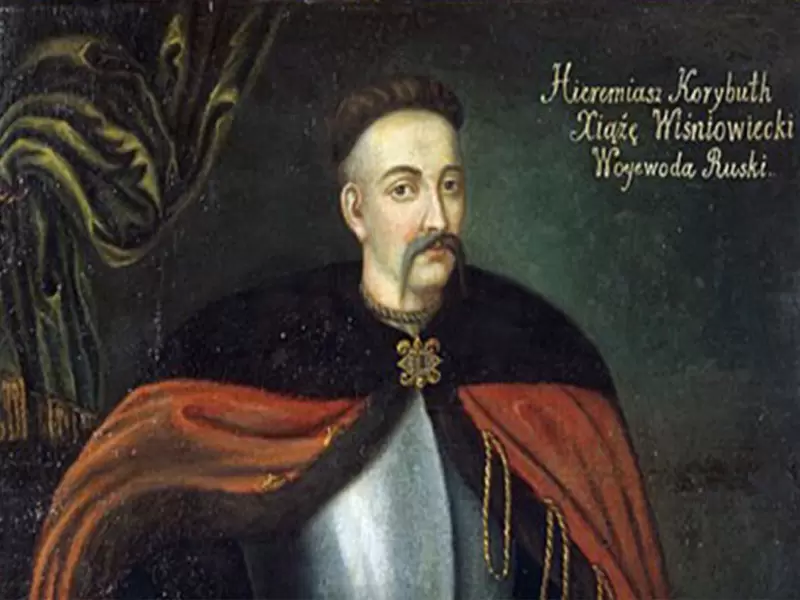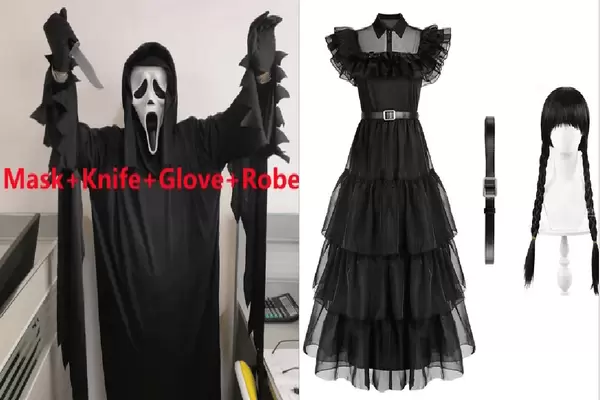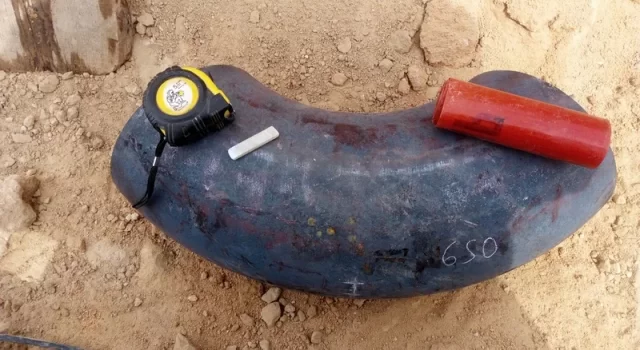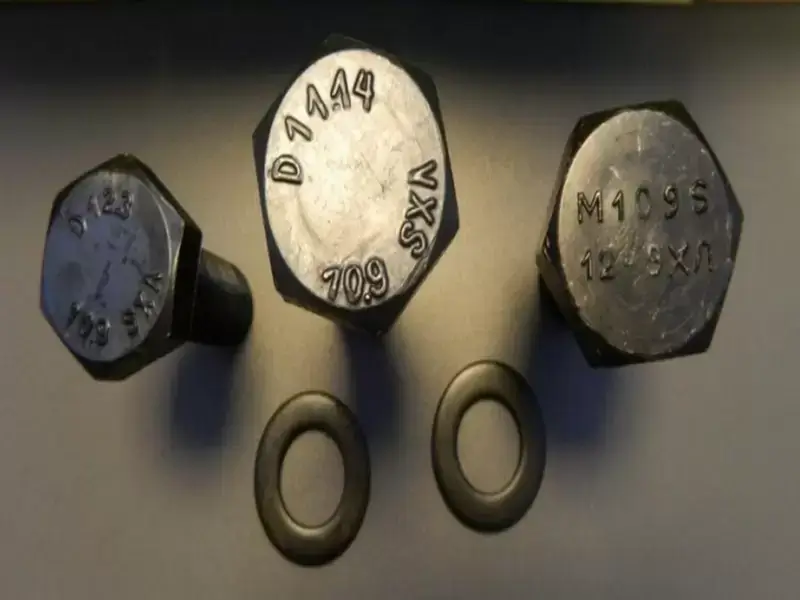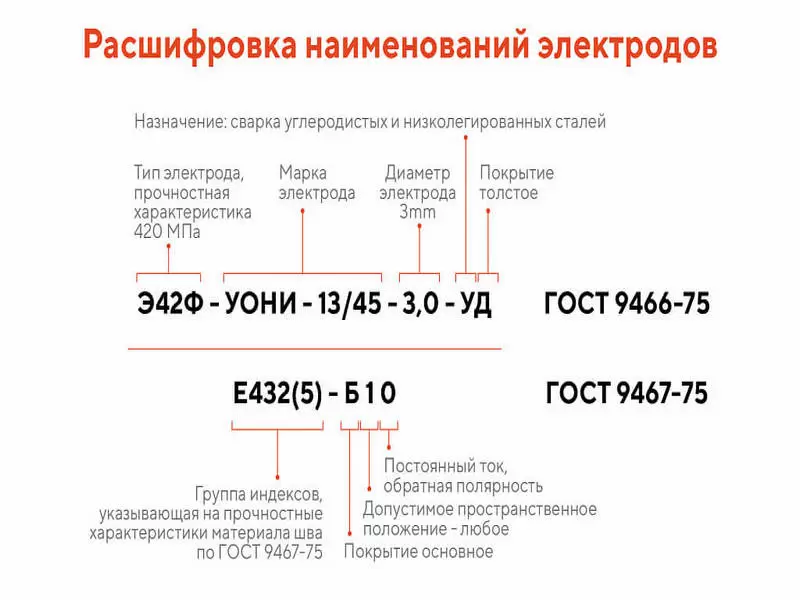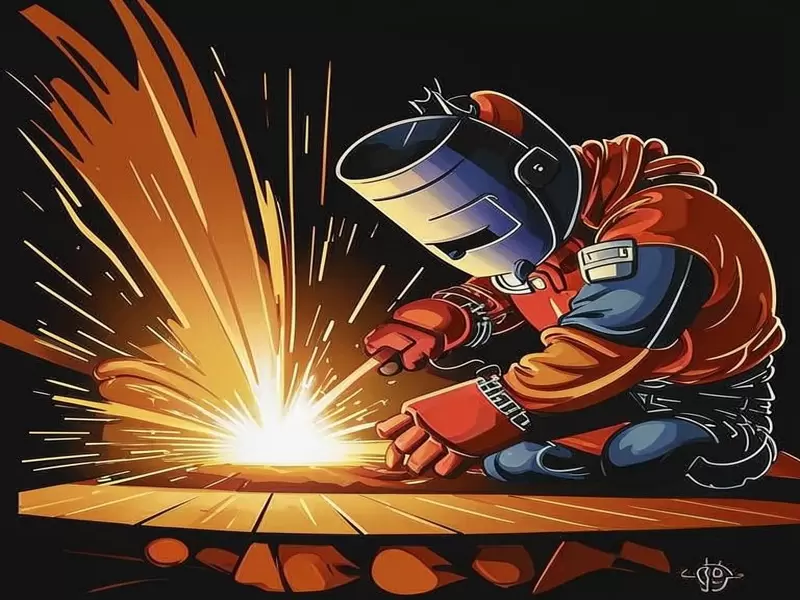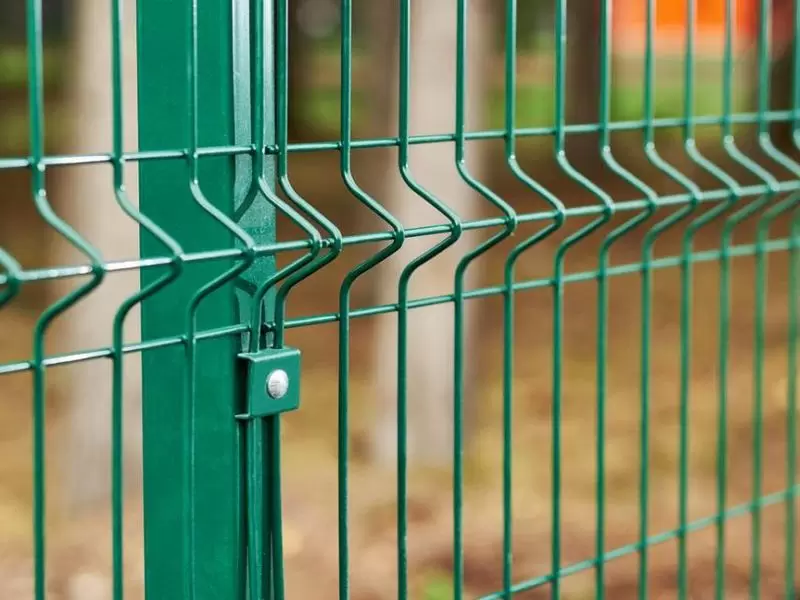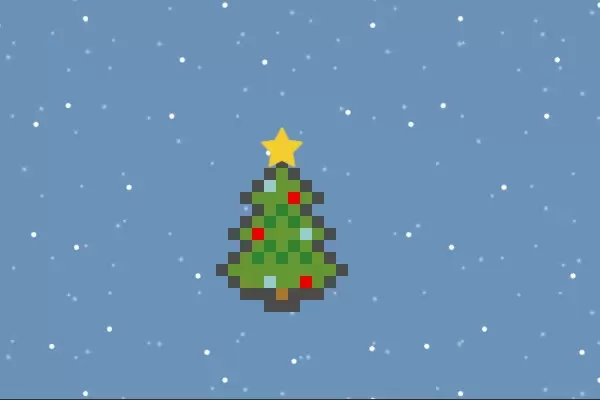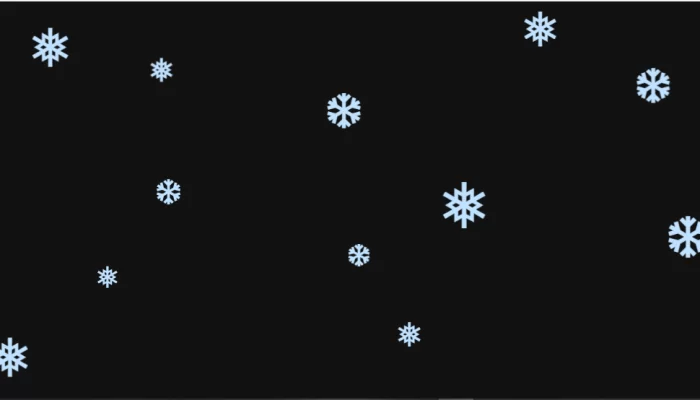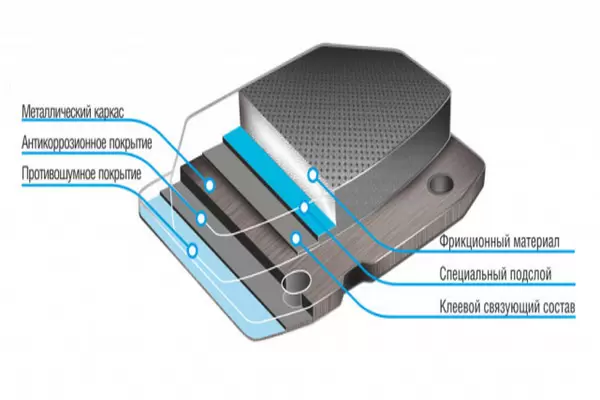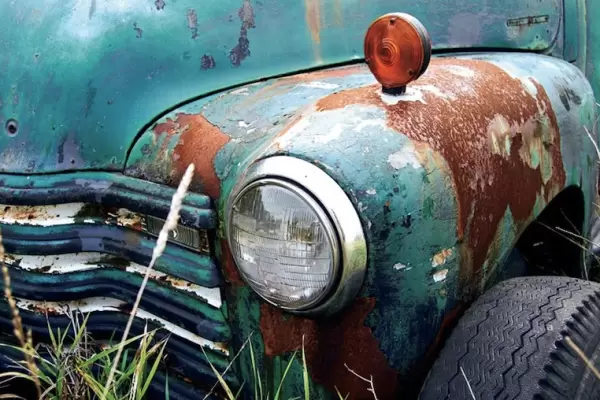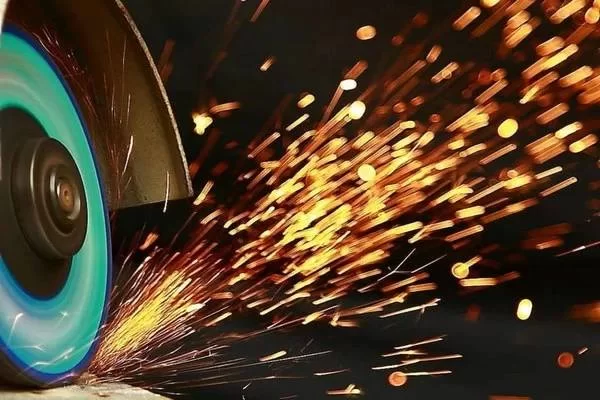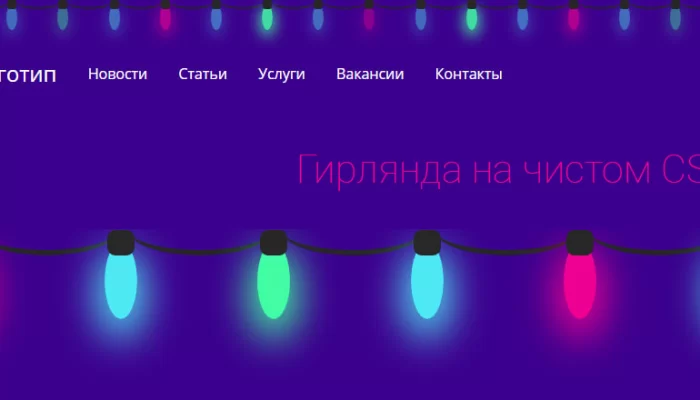
Эффект искажения картинке на видеокамерах
25-января-2023, 20:45 215 0
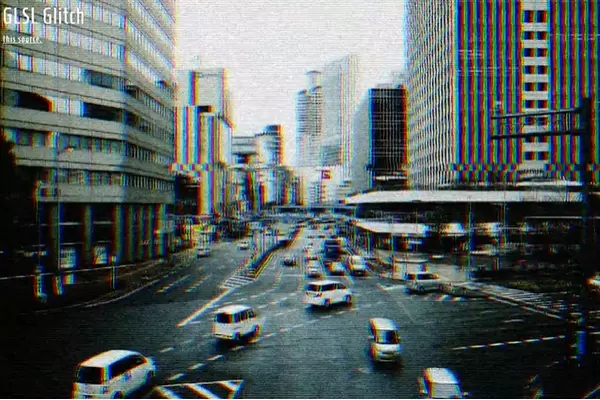
В этом фрагменте кода мы видим эффект искажения поверх изображения , к примеру как в фильмах когда глушат сигнал на видеокамерах. Кстати не так давно публиковал подобный эффект. Эффект сбоя изображения создан с помощью three.js . Он был разработан Ёичи Обаяши . Возможно кому то и пригодится для использования в каком либо проекте.
Pug
.p-summary
h1 GLSL Glitch
p
a(href="https://ykob.github.io/sketch-threejs/sketch/glitch.html", target="_blank")
|this source.
canvas(id="canvas-webgl", class="p-canvas-webgl")SCSS
@import url('https://fonts.googleapis.com/css?family=Homenaje');
.p-canvas-webgl {
position: fixed;
z-index: 1;
top: 0; left: 0;
}
.p-summary {
position: absolute;
top: 20px; left: 20px;
z-index: 2;
color: #fff;
font-family: 'Homenaje', sans-serif;
h1 {
margin: 0 0 0.2em;
font-size: 42px;
font-weight: 400;
letter-spacing: 0.05em;
}
p {
margin: 0;
font-size: 1.1rem;
letter-spacing: 0.1em;
}
a {
color: #fff;
}
}Babel
class BackgroundImage {
constructor() {
this.uniforms = {
resolution: {
type: 'v2',
value: new THREE.Vector2(window.innerWidth, window.innerHeight),
},
imageResolution: {
type: 'v2',
value: new THREE.Vector2(2048, 1356),
},
texture: {
type: 't',
value: null,
},
};
this.obj = null;
}
init(src, callback) {
const loader = new THREE.TextureLoader();
loader.crossOrigin = '*';
loader.load(
src, (tex) => {
tex.magFilter = THREE.NearestFilter;
tex.minFilter = THREE.NearestFilter;
this.uniforms.texture.value = tex;
this.obj = this.createObj();
callback();
});
}
createObj() {
return new THREE.Mesh(
new THREE.PlaneBufferGeometry(2, 2),
new THREE.RawShaderMaterial({
uniforms: this.uniforms,
vertexShader: `attribute vec3 position;
attribute vec2 uv;
varying vec2 vUv;
void main(void) {
vUv = uv;
gl_Position = vec4(position, 1.0);
}
`,
fragmentShader: `precision highp float;
uniform vec2 resolution;
uniform vec2 imageResolution;
uniform sampler2D texture;
varying vec2 vUv;
void main(void) {
vec2 ratio = vec2(
min((resolution.x / resolution.y) / (imageResolution.x / imageResolution.y), 1.0),
min((resolution.y / resolution.x) / (imageResolution.y / imageResolution.x), 1.0)
);
vec2 uv = vec2(
vUv.x * ratio.x + (1.0 - ratio.x) * 0.5,
vUv.y * ratio.y + (1.0 - ratio.y) * 0.5
);
gl_FragColor = texture2D(texture, uv);
}
`,
})
);
}
resize() {
this.uniforms.resolution.value.set(window.innerWidth, window.innerHeight);
}
}
class PostEffect {
constructor(texture) {
this.uniforms = {
time: {
type: 'f',
value: 0
},
resolution: {
type: 'v2',
value: new THREE.Vector2(window.innerWidth, window.innerHeight)
},
texture: {
type: 't',
value: texture,
},
};
this.obj = this.createObj();
}
createObj() {
return new THREE.Mesh(
new THREE.PlaneBufferGeometry(2, 2),
new THREE.RawShaderMaterial({
uniforms: this.uniforms,
vertexShader: `attribute vec3 position;
attribute vec2 uv;
varying vec2 vUv;
void main() {
vUv = uv;
gl_Position = vec4(position, 1.0);
}
`,
fragmentShader: `precision highp float;
uniform float time;
uniform vec2 resolution;
uniform sampler2D texture;
varying vec2 vUv;
float random(vec2 c){
return fract(sin(dot(c.xy ,vec2(12.9898,78.233))) * 43758.5453);
}
//
// Description : Array and textureless GLSL 2D/3D/4D simplex
// noise functions.
// Author : Ian McEwan, Ashima Arts.
// Maintainer : ijm
// Lastmod : 20110822 (ijm)
// License : Copyright (C) 2011 Ashima Arts. All rights reserved.
// Distributed under the MIT License. See LICENSE file.
// https://github.com/ashima/webgl-noise
//
vec3 mod289(vec3 x) {
return x - floor(x * (1.0 / 289.0)) * 289.0;
}
vec4 mod289(vec4 x) {
return x - floor(x * (1.0 / 289.0)) * 289.0;
}
vec4 permute(vec4 x) {
return mod289(((x*34.0)+1.0)*x);
}
vec4 taylorInvSqrt(vec4 r)
{
return 1.79284291400159 - 0.85373472095314 * r;
}
float snoise3(vec3 v)
{
const vec2 C = vec2(1.0/6.0, 1.0/3.0) ;
const vec4 D = vec4(0.0, 0.5, 1.0, 2.0);
// First corner
vec3 i = floor(v + dot(v, C.yyy) );
vec3 x0 = v - i + dot(i, C.xxx) ;
// Other corners
vec3 g = step(x0.yzx, x0.xyz);
vec3 l = 1.0 - g;
vec3 i1 = min( g.xyz, l.zxy );
vec3 i2 = max( g.xyz, l.zxy );
// x0 = x0 - 0.0 + 0.0 * C.xxx;
// x1 = x0 - i1 + 1.0 * C.xxx;
// x2 = x0 - i2 + 2.0 * C.xxx;
// x3 = x0 - 1.0 + 3.0 * C.xxx;
vec3 x1 = x0 - i1 + C.xxx;
vec3 x2 = x0 - i2 + C.yyy; // 2.0*C.x = 1/3 = C.y
vec3 x3 = x0 - D.yyy; // -1.0+3.0*C.x = -0.5 = -D.y
// Permutations
i = mod289(i);
vec4 p = permute( permute( permute(
i.z + vec4(0.0, i1.z, i2.z, 1.0 ))
+ i.y + vec4(0.0, i1.y, i2.y, 1.0 ))
+ i.x + vec4(0.0, i1.x, i2.x, 1.0 ));
// Gradients: 7x7 points over a square, mapped onto an octahedron.
// The ring size 17*17 = 289 is close to a multiple of 49 (49*6 = 294)
float n_ = 0.142857142857; // 1.0/7.0
vec3 ns = n_ * D.wyz - D.xzx;
vec4 j = p - 49.0 * floor(p * ns.z * ns.z); // mod(p,7*7)
vec4 x_ = floor(j * ns.z);
vec4 y_ = floor(j - 7.0 * x_ ); // mod(j,N)
vec4 x = x_ *ns.x + ns.yyyy;
vec4 y = y_ *ns.x + ns.yyyy;
vec4 h = 1.0 - abs(x) - abs(y);
vec4 b0 = vec4( x.xy, y.xy );
vec4 b1 = vec4( x.zw, y.zw );
//vec4 s0 = vec4(lessThan(b0,0.0))*2.0 - 1.0;
//vec4 s1 = vec4(lessThan(b1,0.0))*2.0 - 1.0;
vec4 s0 = floor(b0)*2.0 + 1.0;
vec4 s1 = floor(b1)*2.0 + 1.0;
vec4 sh = -step(h, vec4(0.0));
vec4 a0 = b0.xzyw + s0.xzyw*sh.xxyy ;
vec4 a1 = b1.xzyw + s1.xzyw*sh.zzww ;
vec3 p0 = vec3(a0.xy,h.x);
vec3 p1 = vec3(a0.zw,h.y);
vec3 p2 = vec3(a1.xy,h.z);
vec3 p3 = vec3(a1.zw,h.w);
//Normalise gradients
vec4 norm = taylorInvSqrt(vec4(dot(p0,p0), dot(p1,p1), dot(p2, p2), dot(p3,p3)));
p0 *= norm.x;
p1 *= norm.y;
p2 *= norm.z;
p3 *= norm.w;
// Mix final noise value
vec4 m = max(0.6 - vec4(dot(x0,x0), dot(x1,x1), dot(x2,x2), dot(x3,x3)), 0.0);
m = m * m;
return 42.0 * dot( m*m, vec4( dot(p0,x0), dot(p1,x1),
dot(p2,x2), dot(p3,x3) ) );
}
const float interval = 3.0;
void main(void){
float strength = smoothstep(interval * 0.5, interval, interval - mod(time, interval));
vec2 shake = vec2(strength * 8.0 + 0.5) * vec2(
random(vec2(time)) * 2.0 - 1.0,
random(vec2(time * 2.0)) * 2.0 - 1.0
) / resolution;
float y = vUv.y * resolution.y;
float rgbWave = (
snoise3(vec3(0.0, y * 0.01, time * 400.0)) * (2.0 + strength * 32.0)
* snoise3(vec3(0.0, y * 0.02, time * 200.0)) * (1.0 + strength * 4.0)
+ step(0.9995, sin(y * 0.005 + time * 1.6)) * 12.0
+ step(0.9999, sin(y * 0.005 + time * 2.0)) * -18.0
) / resolution.x;
float rgbDiff = (6.0 + sin(time * 500.0 + vUv.y * 40.0) * (20.0 * strength + 1.0)) / resolution.x;
float rgbUvX = vUv.x + rgbWave;
float r = texture2D(texture, vec2(rgbUvX + rgbDiff, vUv.y) + shake).r;
float g = texture2D(texture, vec2(rgbUvX, vUv.y) + shake).g;
float b = texture2D(texture, vec2(rgbUvX - rgbDiff, vUv.y) + shake).b;
float whiteNoise = (random(vUv + mod(time, 10.0)) * 2.0 - 1.0) * (0.15 + strength * 0.15);
float bnTime = floor(time * 20.0) * 200.0;
float noiseX = step((snoise3(vec3(0.0, vUv.x * 3.0, bnTime)) + 1.0) / 2.0, 0.12 + strength * 0.3);
float noiseY = step((snoise3(vec3(0.0, vUv.y * 3.0, bnTime)) + 1.0) / 2.0, 0.12 + strength * 0.3);
float bnMask = noiseX * noiseY;
float bnUvX = vUv.x + sin(bnTime) * 0.2 + rgbWave;
float bnR = texture2D(texture, vec2(bnUvX + rgbDiff, vUv.y)).r * bnMask;
float bnG = texture2D(texture, vec2(bnUvX, vUv.y)).g * bnMask;
float bnB = texture2D(texture, vec2(bnUvX - rgbDiff, vUv.y)).b * bnMask;
vec4 blockNoise = vec4(bnR, bnG, bnB, 1.0);
float bnTime2 = floor(time * 25.0) * 300.0;
float noiseX2 = step((snoise3(vec3(0.0, vUv.x * 2.0, bnTime2)) + 1.0) / 2.0, 0.12 + strength * 0.5);
float noiseY2 = step((snoise3(vec3(0.0, vUv.y * 8.0, bnTime2)) + 1.0) / 2.0, 0.12 + strength * 0.3);
float bnMask2 = noiseX2 * noiseY2;
float bnR2 = texture2D(texture, vec2(bnUvX + rgbDiff, vUv.y)).r * bnMask2;
float bnG2 = texture2D(texture, vec2(bnUvX, vUv.y)).g * bnMask2;
float bnB2 = texture2D(texture, vec2(bnUvX - rgbDiff, vUv.y)).b * bnMask2;
vec4 blockNoise2 = vec4(bnR2, bnG2, bnB2, 1.0);
float waveNoise = (sin(vUv.y * 1200.0) + 1.0) / 2.0 * (0.15 + strength * 0.2);
gl_FragColor = vec4(r, g, b, 1.0) * (1.0 - bnMask - bnMask2) + (whiteNoise + blockNoise + blockNoise2 - waveNoise);
}
`,
})
);
}
render(time) {
this.uniforms.time.value += time;
}
resize() {
this.uniforms.resolution.value.set(window.innerWidth, window.innerHeight);
}
}
class ConsoleSignature {
constructor() {
this.message = `created by yoichi kobayashi`;
this.url = `http://www.tplh.net`;
this.show();
}
show() {
if (navigator.userAgent.toLowerCase().indexOf('chrome') > -1) {
const args = [
`\n%c ${this.message} %c%c ${this.url} \n\n`,
'color: #fff; background: #222; padding:3px 0;',
'padding:3px 1px;',
'color: #fff; background: #47c; padding:3px 0;',
];
console.log.apply(console, args);
} else if (window.console) {
console.log(`${this.message} ${this.url}`);
}
}
}
const debounce = (callback, duration) => {
var timer;
return function(event) {
clearTimeout(timer);
timer = setTimeout(function(){
callback(event);
}, duration);
};
};
const canvas = document.getElementById('canvas-webgl');
const renderer = new THREE.WebGLRenderer({
antialias: false,
canvas: canvas,
});
const renderBack1 = new THREE.WebGLRenderTarget(window.innerWidth, window.innerHeight);
const scene = new THREE.Scene();
const sceneBack = new THREE.Scene();
const camera = new THREE.OrthographicCamera(-1, 1, 1, -1, 0, 1);
const cameraBack = new THREE.PerspectiveCamera(45, window.innerWidth / window.innerHeight, 1, 10000);
const clock = new THREE.Clock();
//
// process for this sketch.
//
const bgImg = new BackgroundImage();
const postEffect = new PostEffect(renderBack1.texture);
const consoleSignature = new ConsoleSignature();
//
// common process
//
const resizeWindow = () => {
canvas.width = window.innerWidth;
canvas.height = window.innerHeight;
cameraBack.aspect = window.innerWidth / window.innerHeight;
cameraBack.updateProjectionMatrix();
bgImg.resize();
postEffect.resize();
renderBack1.setSize(window.innerWidth, window.innerHeight);
renderer.setSize(window.innerWidth, window.innerHeight);
}
const render = () => {
const time = clock.getDelta();
renderer.render(sceneBack, cameraBack, renderBack1);
postEffect.render(time);
renderer.render(scene, camera);
}
const renderLoop = () => {
render();
requestAnimationFrame(renderLoop);
}
const on = () => {
window.addEventListener('resize', debounce(() => {
resizeWindow();
}), 1000);
}
const init = () => {
renderer.setSize(window.innerWidth, window.innerHeight);
renderer.setClearColor(0x111111, 1.0);
cameraBack.position.set(0, 0, 100);
cameraBack.lookAt(new THREE.Vector3());
bgImg.init('http://www.tplh.net/file/osaka01.jpg', () => {
sceneBack.add(bgImg.obj);
scene.add(postEffect.obj);
})
on();
resizeWindow();
renderLoop();
}
init();
